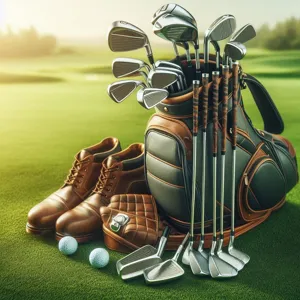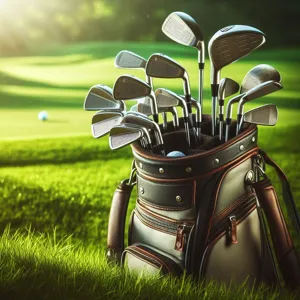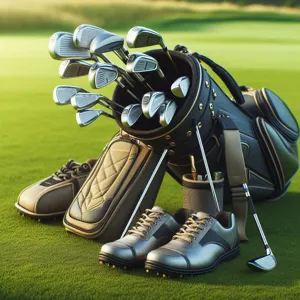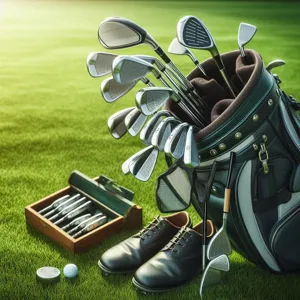Motorbikes embody freedom, adventure, and the thrill of the open road, making them a captivating subject for any photographer.
Whether you’re a seasoned rider looking to showcase your passion or an aspiring photographer eager to capture the adrenaline of the ride, mastering the art of motorbike photography and videography can elevate your skills to new heights. In this blog post, we’ll dive into essential tips and techniques that will help you capture stunning images and dynamic videos of motorbikes in action. From the best angles and lighting conditions to understanding motion and compositional techniques, you’ll discover how to create visuals that not only highlight the sleek design and powerful performance of these machines but also evoke the exhilaration of the ride. So, gear up and get ready to rev your creativity as we explore the world of motorbike photography like never before!
1. Understanding Your Equipment: Cameras and Lenses for Motorbike Photography

When it comes to capturing stunning motorbike photos and videos, understanding your equipment is the cornerstone of your success. The right camera and lens can transform an average shot into a breathtaking piece of art, allowing you to showcase the power and beauty of the machines you love.
First, let’s talk about cameras. Many photographers opt for DSLRs or mirrorless cameras for their versatility and high-quality image output. These cameras offer a range of settings that can adapt to the fast-paced action of motorbike photography. Look for models with fast shutter speeds to freeze the motion of a speeding bike, as well as good autofocus capabilities to keep your subject sharp even as they zoom past.
Additionally, consider the benefits of using a camera with a high burst rate for action shots. This feature allows you to capture multiple frames per second, increasing your chances of getting that perfect shot as the rider leans into a curve or jumps off a ramp.
Lenses also play a crucial role in your photography toolkit. A wide-angle lens is ideal for capturing the full scope of a bike in its environment, especially in tight spaces or when you want to include the scenic backdrop. Conversely, a telephoto lens can help you zoom in on the details of the motorbike or capture distant riders without losing clarity. A lens with a fast aperture is also beneficial, allowing for stunning depth of field and beautiful bokeh effects that can make your subject pop against a blurred background.
Don’t forget about accessories! A sturdy tripod or monopod can offer stability for those longer exposures, while a polarizing filter can help reduce glare from shiny surfaces, enhancing the overall richness of your images. Whether you’re shooting in bright sunshine or overcast conditions, these tools can elevate your photography and help you tell a compelling story through your lens.
By investing time in understanding your equipment and how to use it effectively, you’ll be well on your way to capturing breathtaking motorbike photos and videos that truly rev up your audience’s excitement!
2. Choosing the Right Location: Ideal Spots for Stunning Shots
When it comes to capturing breathtaking motorbike photos and videos, the location can make all the difference. The right backdrop not only enhances the visual appeal of your shots but also adds context and emotion to your images. Here are some ideal spots to consider for your next photography session:
**Scenic Highways and Roads**: Nothing beats the open road for capturing the spirit of motorbiking. Look for winding mountain roads, coastal highways, or picturesque countryside routes. These locations offer stunning vistas that can frame your bike in dramatic ways, especially during golden hour when the light is soft and warm.
**Abandoned Buildings or Industrial Areas**: If you’re aiming for an edgier aesthetic, consider using abandoned warehouses, factories, or old gas stations as your backdrop. The juxtaposition of a sleek motorbike against rustic, weathered structures can create a striking contrast that tells a story of freedom and nostalgia.
**Natural Landscapes**: Parks, forests, and lakesides provide a serene backdrop for your motorbike photography. Capture your bike amidst lush greenery or by a shimmering body of water. These natural settings can evoke a sense of adventure and tranquility, showcasing the harmony between man and nature.
**Urban Streets**: Cityscapes offer a vibrant and dynamic environment for your shots. Look for colorful murals, bustling streets, or unique architecture that can add character to your images. Whether it’s a nighttime shot illuminated by streetlights or a daytime capture with the city buzz in the background, urban settings can bring a modern edge to your motorbike photography.
**Racetracks or Events**: If you have access to a racetrack or a motorbike event, take advantage of the action-packed atmosphere. The excitement of speed, coupled with the thrill of competition, can create dynamic shots that showcase your bike in its element. Capture the blur of motion and the intensity of the moment for an adrenaline-fueled vibe.
When choosing your location, consider the time of day, weather conditions, and the overall mood you want to convey. Each setting offers a unique opportunity to tell a story through your lens. By selecting the right location, you can elevate your motorbike photos and videos, capturing the essence of adventure and the thrill of the ride.
3. The Perfect Time of Day: Utilizing Natural Light for Impact

When it comes to capturing stunning motorbike photos and videos, the time of day can be just as crucial as the skills behind the lens. Natural light has a profound effect on the mood and quality of your images, and knowing when to shoot can make all the difference.
The golden hours—shortly after sunrise and just before sunset—are often hailed as the best times for photography. During these times, the sun casts a warm, soft light that can wrap around your bike, highlighting its curves and textures while minimizing harsh shadows. The low angle of the sun can also create dramatic backlighting, giving your shots an ethereal glow and adding depth to your composition.
In contrast, shooting during midday can result in unflattering overhead lighting that can wash out colors and create unappealing shadows. If you find yourself shooting during these hours, consider seeking out shaded areas or using reflectors to soften the harsh light.
Additionally, overcast days can offer their own unique benefits. The diffused light produced by clouds minimizes shadows and creates a more even exposure, allowing you to capture the finer details of your motorbike without distraction. This soft lighting is particularly effective for accentuating the sleek lines and intricate designs of your bike, ensuring that every detail is showcased beautifully.
By planning your shoots around these optimal times, you can enhance your photography significantly. Remember, the right light can transform a good shot into a great one, so take the time to consider the golden hours or the effects of overcast conditions. With a keen eye for light and a bit of patience, you’ll be well on your way to capturing breathtaking images that truly showcase the spirit of motorbiking.
4. Composition Techniques: Framing Your Shots Like a Pro
When it comes to capturing stunning motorbike photos and videos, mastering composition techniques can elevate your work from average to extraordinary. Composition refers to how you arrange the elements within your frame, and a well-composed shot can draw viewers in, showcasing the beauty and power of the motorbike in ways that leave a lasting impression.
One of the key techniques to consider is the **Rule of Thirds**. Imagine your frame divided into nine equal sections by two horizontal and two vertical lines. Positioning the motorbike along these lines or placing it at one of the intersection points creates a dynamic balance that is naturally pleasing to the eye. This method not only helps to highlight the bike but also allows for more engaging backgrounds, contributing depth to your shot.
Another effective technique is **leading lines**. Look for natural lines in your environment—like winding roads, railroad tracks, or even architectural features—that guide the viewer’s eye towards the motorbike. This not only adds interest but also enhances the sense of motion and speed, making your photos feel more alive.
Don’t forget about **framing** as well. Use surrounding elements such as trees, arches, or buildings to frame your subject. This draws the viewer’s attention directly to the motorbike while adding context to the scene. Experimenting with different angles can also help; shooting from a low angle can give the bike a more imposing presence, while a high angle can provide a unique perspective that captures the surrounding landscape.
Lastly, consider the **background** of your shot. A cluttered or distracting background can detract from the beauty of the motorbike. Seek out clean, simple backgrounds that allow the bike to stand out. Alternatively, use interesting textures or colors that complement the bike’s design.
By incorporating these composition techniques, you’ll not only refine your photography skills but also create captivating images that showcase the spirit and essence of motorbiking. With practice and creativity, your shots will resonate with fellow enthusiasts, turning your portfolio into a stunning visual journey.
5. Action Shots: Tips for Capturing Motion and Speed

Capturing the exhilaration of a motorbike in motion is one of the most thrilling aspects of motorcycle photography and videography. Action shots convey not just speed but also the raw power and freedom that riding a bike embodies. To effectively capture this dynamic essence, you’ll want to focus on a few key techniques that will elevate your images and videos from static to sensational.
First, consider your camera settings. A fast shutter speed is crucial for freezing the action and eliminating motion blur. Depending on the lighting conditions, aim for a shutter speed of at least 1/1000th of a second, but don’t hesitate to go faster if you’re shooting in bright daylight. Conversely, if you want to convey a sense of speed, try using a slower shutter speed while panning your camera along with the moving bike. This technique blurs the background while keeping the bike sharply in focus, creating a stunning effect that emphasizes motion.
Next, pay attention to your composition. Low-angle shots can make a motorbike appear even more imposing and powerful, while capturing the bike in a corner or navigating through a twisty road can showcase its agility and speed. Experiment with different perspectives—shooting from the side, front, or even from above—to find the angle that best highlights the bike’s features and the thrill of the ride.
Timing is also critical. Anticipate the bike’s movements and be ready to capture the decisive moment, whether it’s the roar of the engine as the rider accelerates or the spray of gravel as they lean into a turn. If you’re filming a rider, communicate with them about the best spots to capture their speed, and consider using a follow car or drone to get those sweeping cinematic shots.
Lastly, don’t forget about the lighting. Early morning or late afternoon, known as the “golden hour,” provides soft, warm light that enhances colors and adds depth to your images. If you’re shooting in harsher midday light, look for shaded areas or use reflectors to fill in shadows.
By implementing these techniques, you’ll be well on your way to capturing breathtaking action shots that not only showcase the beauty of motorbikes but also evoke the thrill and adventure that every ride promises. Get ready to rev up your photography skills and create images that will have viewers feeling the rush of the open road!
6. Using Angles to Your Advantage: Unique Perspectives in Motorbike Photography
When it comes to motorbike photography, the angle from which you shoot can make all the difference between a mediocre image and a breathtaking masterpiece. Experimenting with unique perspectives not only adds interest to your photos but also conveys the power and grace of the machine in motion.
Start by getting low to the ground; this can create a dramatic effect that emphasizes the bike’s sleek lines and aggressive stance. A shot taken from this angle can make the motorbike appear even more formidable, capturing the essence of the ride. Alternatively, consider shooting from above—using a drone or finding a high vantage point can provide a stunning bird’s-eye view of the bike, especially if it’s set against a breathtaking landscape.
Side profiles are classic for a reason; they showcase the entire length of the bike and can effectively highlight its design features. However, don’t shy away from capturing the bike at dynamic angles—tilting your camera slightly or framing it as if it’s in motion can convey a sense of speed and excitement.
Moreover, incorporating the rider into your shots can add an element of storytelling. Capture close-ups of the rider’s hands gripping the handlebars or their boots resting on the foot pegs. These perspectives not only humanize the machine but also evoke the thrill of the ride.
Lighting plays a crucial role as well. Shooting during the golden hour—shortly after sunrise or before sunset—can provide a warm, golden hue that enhances the overall mood of your shots. Shadows and highlights can accentuate the bike’s curves, creating depth and dimension.
By creatively playing with angles and perspectives, you can transform ordinary motorbike photos into captivating visual narratives that not only showcase the beauty of the bike but also convey the exhilarating spirit of the ride. So grab your camera, find a unique angle, and let your creativity soar!
7. Incorporating the Rider: Adding a Human Element to Your Photos

Incorporating the rider into your motorbike photography can transform a simple shot into a compelling narrative. A motorbike is more than just a machine; it’s a vessel that carries the spirit of adventure, freedom, and individuality. By including the rider, you not only add a human element but also convey emotions and stories that resonate with viewers.
Start by considering the positioning of the rider in relation to the bike. A shot that captures the rider in action—leaning into a curve or speeding down an open road—can instill a sense of movement and excitement. Use dynamic angles to showcase both the rider and the bike, whether it’s a close-up of the rider’s focused expression or a wide shot that highlights the bike’s sleek lines against a stunning backdrop.
Lighting plays a crucial role in how both the rider and the bike are perceived. Golden hour, just before sunset or after sunrise, provides a warm, flattering light that enhances colors and adds depth to your images. Shadow play can also add drama; consider taking shots where the rider’s silhouette contrasts against a vibrant sunset or a sprawling landscape.
Moreover, the rider’s attire can add character to the composition. Whether they’re dressed in rugged leather or vibrant racing gear, the choice of clothing can tell a story about the type of adventure they’re embarking on. Encourage your rider to interact with the environment—leaning against the bike, adjusting their helmet, or even gazing into the distance—as these candid moments can evoke a sense of authenticity and connection.
Lastly, don’t underestimate the power of storytelling. Try to capture the emotions of the ride—joy, freedom, and exhilaration. A well-timed shot of a rider laughing with the wind in their hair or looking contemplative while parked at a scenic overlook can create a powerful visual narrative. By incorporating the rider, you’re not just taking photos of motorbikes; you’re capturing the essence of the ride itself, inviting your audience to feel the thrill and passion that comes with every journey.
8. Post-Processing Tips: Enhancing Your Images with Editing Software
Once the thrill of the ride is over and your camera has captured those exhilarating moments, the next crucial step is transforming your raw images into stunning visual stories through post-processing. Editing software can be your best friend, allowing you to refine your photographs and videos, enhancing their impact and bringing your artistic vision to life.
Start by organizing your images; a well-structured workflow makes it easier to navigate through your shots. Programs like Adobe Lightroom and Photoshop offer a plethora of tools to improve your images significantly. Begin with basic adjustments—tweak the exposure to brighten up those shadowy areas, elevate the contrast to make the colors pop, and fine-tune the white balance for accurate color representation. Pay attention to the details: sharpening the edges of the motorbike can create a crisp, defined look, while adding a touch of vignette can draw the viewer’s eye toward the focal point of your image.
When it comes to videos, consider using software such as Adobe Premiere Pro or Final cut Pro. Start with a storyboard; this helps in organizing your clips and determining the pace of your final product. Utilize color grading to create a mood—rich, vibrant hues can evoke excitement, while muted tones can lend a sense of nostalgia. Don’t underestimate the power of sound; adding the rumble of the engine or the whoosh of the wind can transport viewers right into the saddle.
Finally, don’t forget to experiment! Every photographer has a unique style, and post-processing is where you can truly express yours. Whether it’s through bold filters, creative cropping, or layering effects, allow your personality to shine through in your work. With the right editing techniques, your motorbike photos and videos can elevate from mere captures to breathtaking pieces of art that resonate with fellow enthusiasts and inspire new riders alike.
9. Creating Dynamic Videos: Techniques for Shooting Motorbike Footage
Creating dynamic videos that truly capture the essence of motorbiking requires a mix of technique, creativity, and an understanding of your subject. As you prepare to shoot, consider your surroundings and the storytelling potential they offer. Whether you’re in a bustling city, winding mountain roads, or open highways, each setting can enhance the narrative of your footage.
### Camera Angles and Movement
Experimenting with different camera angles is key to producing engaging motorbike footage. Low-angle shots can emphasize the power and presence of the bike, while shots from above can provide a unique perspective on the rider’s maneuvers. Utilize a gimbal or stabilizer to ensure smooth footage, especially when capturing high-speed action or tight turns. Consider mounting your camera on the bike itself for immersive shots that allow viewers to feel the rush of the ride.
### Slow Motion and Time-Lapse
Incorporating slow-motion sequences can heighten the drama of your footage, allowing viewers to appreciate the details of the bike’s performance and the rider’s skill. Capture moments like a wheelie or a sharp corner in slow motion to create a striking visual impact. On the other hand, time-lapse shots can effectively showcase long rides or changing landscapes, condensing hours of travel into seconds of captivating video.
### Sound Design
Don’t overlook the importance of sound in your motorbike videos. The roar of the engine, the whoosh of the wind, and the crunch of gravel under tires all contribute to the atmosphere. Use an external microphone to capture these sounds more clearly. Additionally, consider layering in music that complements the visuals, enhancing the overall emotional experience for your audience.
### Editing Techniques
Finally, invest time in the editing process to piece together your footage into a cohesive story. Use quick cuts to maintain energy during action-packed sequences and longer takes to allow moments of beauty to breathe. Adding transitions, effects, and color grading can further elevate your video, ensuring that it resonates with viewers and keeps them coming back for more.
By applying these techniques, you’ll not only capture stunning footage but also create a vivid narrative that showcases the thrill of motorbiking, inviting your audience to experience the ride alongside you.
10. Utilizing Tripods and Gimbals for Stability
When it comes to capturing stunning motorbike photos and videos, stability is your best friend. Utilizing tripods and gimbals can significantly elevate the quality of your shots, ensuring that every rev of the engine and every twist of the road is showcased with clarity and precision.
**Tripods** are excellent for static shots, especially when you’re aiming for that picturesque landscape backdrop or a detailed close-up of the bike’s intricate design. Look for a sturdy tripod that can withstand the outdoor elements, and consider one with adjustable height and angles, allowing you to experiment with different perspectives. A low-angle shot can make your motorbike look even more imposing against a sunset, while a high-angle shot might help capture the surrounding scenery, providing context to the bike’s journey.
On the other hand, **gimbals** are invaluable when you’re capturing action shots or moving footage. These stabilizing devices allow you to smoothly follow the bike’s movements, whether it’s roaring down a winding road or navigating through a bustling city. With a gimbal, the vibrations and shakes from your own movements are minimized, resulting in fluid and professional-looking video content. This is particularly important for motorbike photography, where the thrill of speed and motion is a crucial element.
When using these tools, don’t be afraid to experiment with different settings and angles. Combine the stability of a tripod for stationary shots with the dynamic fluidity of a gimbal for moving scenes, and you’ll find that the storytelling potential of your photography expands exponentially. In the world of motorbike photography, capturing that perfect moment not only showcases the beauty of the bike but also conveys the exhilaration of the ride, and with the right equipment, you can master both aspects beautifully.
11. Understanding the Importance of Safety in Photography
When it comes to capturing stunning motorbike photos and videos, safety should always take precedence. The thrill of shooting high-speed action shots or dynamic angles can be exhilarating, but it’s crucial to remember that both you and the riders need to be safe while doing so. Understanding the importance of safety in photography not only ensures the well-being of everyone involved but also contributes to the overall quality of your work.
First and foremost, familiarize yourself with the environment in which you’ll be shooting. Whether you’re on a racetrack, a busy street, or a scenic backroad, being aware of your surroundings is essential. Look out for potential hazards such as oncoming traffic, uneven terrain, or sudden weather changes. Always scout the location beforehand to identify the safest spots to position yourself for the best shots, while minimizing risks.
If you’re shooting on public roads, consider enlisting the help of the riders to create a safe corridor. This could involve coordinating with them to ensure they maintain a safe distance from you while executing their maneuvers. Using spotters can also be beneficial—having someone to keep an eye on traffic while you focus on capturing the perfect frame allows you to concentrate on your photography without distraction.
Additionally, be mindful of your own safety gear. Wearing high-visibility clothing and appropriate footwear can help you stay seen and secure, especially in busy areas. If you’re using a drone for aerial shots, familiarize yourself with the regulations and ensure you’re flying it in safe conditions. Always keep your equipment secure, as accidents can occur not just to the riders but also to the gear you rely on to create your art.
Ultimately, prioritizing safety allows you to immerse yourself fully in the creative process without the worry of accidents or injuries. When you establish a safe environment, you can focus on capturing breathtaking shots and videos that showcase the beauty and excitement of motorbiking, all while ensuring that everyone involved heads home safely. Remember, the best photographs come from moments that can be enjoyed and remembered—safely.
12. Showcasing Details: Capturing the Beauty of the Bike
When it comes to motorbike photography, the devil is in the details. While wide shots can certainly capture the essence of a bike in its environment, it’s the close-ups that reveal its true character. Every curve of the frame, the gleam of chrome, and the intricate design of the engine tell a story that can ignite passion in viewers.
Start by getting up close and personal with the bike. Focus on unique features that make it stand out, whether it’s the texture of the leather seat, the precision of the gauge cluster, or the intricate patterns of the decals. Utilize a macro lens if you have one, as it will allow you to capture those fine details that might otherwise go unnoticed. The glint of sunlight reflecting off polished metal or the subtle wear on the grips can evoke emotion and tell a story of adventures taken.
Experiment with different angles to showcase these details. A low-angle shot can emphasize the bike’s aggressive stance and sleek lines, while a top-down perspective can highlight the symmetry of the design. Don’t forget to play with the depth of field; blurring the background can draw the viewer’s focus solely to the beautiful details of the motorbike.
Lighting is also crucial in detail shots. Natural light is your friend, but pay attention to the time of day; the golden hour—shortly after sunrise or before sunset—provides soft, diffused light that enhances textures and colors without harsh shadows. Alternatively, if you’re shooting indoors or in less-than-ideal lighting, consider using a softbox or diffuser to create a more flattering light that showcases the bike’s features.
Finally, don’t shy away from editing your images. Post-processing can enhance details, adjust contrasts, and bring out colors that might not have been as vibrant in the original shot. Use these tools to accentuate the beauty of the bike, ensuring that every photo you share resonates with the thrill of riding and the artistry of the machine. By focusing on the details, you’ll not only capture stunning images but also inspire fellow enthusiasts to appreciate the beauty of motorbikes in all their intricate glory.
13. Engaging with the Motorbike Community: Collaborative Opportunities
Engaging with the motorbike community is an invaluable strategy for elevating your photography and video work. The world of motorcycling is rich with vibrant personalities, exhilarating events, and a passionate audience, all of which offer abundant opportunities for collaboration. By actively participating in this community, you can tap into a wealth of inspiration and resources that will not only enhance your craft but also expand your reach.
Start by connecting with local riding clubs or online forums where enthusiasts share their experiences and tips. Attend motorcycle shows, rallies, and meet-ups to network with fellow photographers, bikers, and influencers who share your passion. These events often present perfect opportunities for shooting dynamic images of bikes in action, capturing candid moments, and even staging collaborative photo shoots with fellow riders.
Consider collaborating with motorbike brands or local dealerships to create promotional content that showcases their latest models. This not only provides you with access to high-quality bikes and gear but also allows you to build a portfolio that appeals to potential clients in the industry. Sharing your work on social media platforms and tagging relevant brands can attract attention, leading to greater opportunities and potential partnerships.
Engaging with the community also means being active in online spaces, such as Instagram or Facebook groups dedicated to motorbike enthusiasts. Share your work, seek feedback, and participate in discussions to establish yourself as a knowledgeable and passionate member of the community. Look for themed photography challenges or contests where you can showcase your skills and connect with like-minded individuals.
By immersing yourself in the motorbike culture and fostering relationships within the community, you’ll not only enhance your photography and videography skills but also create a supportive network that can propel your work to new heights. Remember, collaboration breeds creativity—so don’t hesitate to reach out and share your vision with fellow enthusiasts!
14. Sharing Your Work: Best Platforms for Showcasing Motorbike Photography
When it comes to showcasing your motorbike photography, selecting the right platforms is crucial for reaching a wider audience and gaining recognition in the biking community. The digital landscape offers a plethora of options, each with its own unique advantages.
**Instagram** stands out as a visual-centric platform, making it the perfect place to share your stunning shots. Utilize hashtags like #MotorbikePhotography or #BikeLife to connect with other enthusiasts and attract followers who share your passion. Regularly posting high-quality images, engaging stories, and behind-the-scenes content can help you build a dedicated audience. Don’t forget to interact with your followers through comments and direct messages to cultivate a sense of community.
**Facebook** offers a different avenue, where you can join groups specifically dedicated to motorbikes and photography. Here, you can share your work, seek feedback, and participate in discussions. Creating a dedicated page for your photography can also help you reach more people and keep your best work organized in one place.
For a more professional touch, consider using **Flickr** or **500px**, platforms designed specifically for photographers. These sites allow for higher quality images and provide a space for constructive critique from fellow photographers. They can serve as excellent portfolios, showcasing your best work to potential clients or collaborators.
**YouTube** is an ideal platform for video content. If you’re capturing dynamic footage of motorbikes in action, sharing your edits and vlogs can engage viewers who appreciate both the artistry of photography and the thrill of motorbike culture. Pair your videos with compelling storytelling or tutorials to keep your audience interested.
Finally, don’t underestimate the power of **personal blogs or websites**. Having a dedicated space for your work allows for complete creative control over how you present your photography. This is also a perfect opportunity to share your experiences, tips, and the stories behind each shot, adding depth to your portfolio.
In summary, the best platforms for showcasing your motorbike photography are those that align with your goals and audience. By diversifying where you share your work, you can enhance your visibility, connect with like-minded individuals, and ultimately, rev up your photography career.
15. Continuous Learning: Resources and Workshops for Improvement
Mastering the art of motorcycle photography requires more than just a camera and a sense of adventure; it demands a commitment to continuous learning. The world of photography is dynamic, with new techniques, equipment advancements, and styles emerging regularly. To stay at the forefront of this ever-evolving craft, it’s essential to seek out resources and workshops that can enhance your skills and broaden your understanding.
Start by exploring online platforms like Udemy, Skillshare, or Coursera, which offer a plethora of courses tailored specifically to automotive photography. These courses cover everything from the fundamentals of composition and lighting to advanced post-processing techniques using software like Adobe Lightroom and Photoshop. Look for classes that focus on action shots, as capturing the thrill of speed is key to stunning motorbike imagery.
In addition to online courses, consider attending photography workshops and seminars. Many professional photographers host hands-on workshops that provide invaluable insights and real-time feedback. These events often take place in scenic locations, allowing you to practice your skills in an inspiring environment while connecting with fellow enthusiasts. Check local photography clubs or organizations that specialize in automotive photography for upcoming events; the camaraderie and shared passion can spark new ideas and motivate you to push your creative boundaries.
Don’t forget to tap into the wealth of knowledge available in photography books and online forums. Books by renowned photographers can offer inspiration and practical tips, while forums and social media groups allow you to engage with a community of like-minded individuals. Share your work, ask for critiques, and learn from others’ experiences. Platforms like Instagram and Pinterest can also serve as visual inspiration, showcasing a myriad of styles and techniques that you can adapt to your own work.
Finally, remember that the journey of improvement is ongoing. Regularly challenge yourself to step outside your comfort zone—experiment with different angles, lighting conditions, and editing styles. By embracing continuous learning and utilizing the resources at your disposal, you’ll not only sharpen your skills but also develop a unique voice in the realm of motorcycle photography. As you grow, so too will your ability to capture the essence of motorbikes in stunning, evocative images that resonate with viewers.
As we wrap up our exploration of capturing stunning motorbike photos and videos, we hope you feel inspired and equipped with the knowledge to rev up your photography skills. From understanding the nuances of lighting and composition to mastering the art of motion and detail, these tips are designed to help you showcase the beauty and power of motorbikes in all their glory. Remember, practice makes perfect—so get out there, experiment with different angles and techniques, and don’t be afraid to push your creative boundaries. Whether you’re shooting for personal pleasure or aiming to build a portfolio, let your passion for motorbikes shine through your lens. We can’t wait to see the breathtaking images and videos you create, so be sure to share your work with us and join our community of fellow enthusiasts. Happy shooting!




































